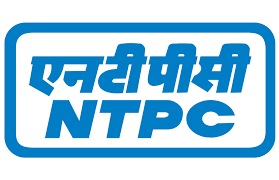Alarming rise breast cancer among young women: Over 40 % of patients now below 50
Chandigarh 15th November 2016 – In what is being seen as an alarming medical trend by doctors, the incidence of breast cancer is rapidly increasing among younger women in India, with more than 40% of the patients now below 50 years of age.
“Till as early as 10 years back, breast cancer was largely considered a disease of elderly women. In fact, age is still considered a major risk factor for breast cancer across the world. However, this medical belief is now on shaky ground with the changing features of the disease being manifested in patients today. Unlike a decade back when most women patients diagnosed with breast cancer were above 50, today more women under 50 years of age are being diagnosed with the disease,” says Dr Amitabh Upadhyay, Consultant Medical Oncologist, Grecian Super Spetiality Hospital, Chandigarh.
Dr Upadhyay blames urban lifestyle factors for the rise in incidence of breast cancer. Among the causes for the surge are increasing obesity, urban lifestyle, lack of exercise, delayed age of childbearing and reduced breastfeeding. The rampant night club culture in cities like Bangalore which promotes unhealthy eating, excessive smoking and drinking indulgences are all contributory factors.
The demography of Indian patients is emerging as different from those in the West where breast cancer is still more prevalent in older women.
“Not only are more younger women being diagnosed with the disease, it has also been observed that cancers in younger women are typically more aggressive which do not respond to common therapies and have more chances of relapsing. Women diagnosed at a younger age also are more likely to have a mutated BRCA1 or BRCA2 genes which present poor prognosis,” adds Dr Upadhyay.
Unfortunately, most young women do not care about regular screening and some even tend to ignore warning signs because they believe they are too young to suffer from breast cancer. In its very initial phase, breast cancer doesn’t present any symptoms; the earliest symptoms that may manifest include a painless lump in the breast, unusual discharge from the nipple, a change in the breast shape or size, or swelling or lump in the underarm area. Any notable abnormality in the breast should be immediately reported to a doctor and evaluated for further investigation.
Late stage detection and lack of screening programs are the biggest concerns in India, with more than 60% of the patients diagnosed in later stages of the disease. Clinical evidence suggests that the percentage of early diagnosed patients is still abysmally low in India, with less than 10% diagnosed in stage 1 and less than 20% diagnosed in stage 2. This means that as many as 60% of the patients present at stage III or stage IV when it is too late to treat the disease or prolong the life of the person.
Dr Upadhyay says there is imminent need for more cancer registry centers in the state to gauge the true extent of the problem.
The good news is that breast cancer is curable if detected timely, and only increased awareness and better screening practices can ensure improved survival rates.
According to estimates of World Health Organization (WHO), roughly 144,937 women in India were detected with breast cancer in 2012 and 70,218 died of it, making it one death for every two new diagnoses. With the incidence of the disease rising by more than 20% since 2008, India is expected to have a whopping 200,000 new cases of breast cancer per year by 2030.
Stay Alert Once You Turn 25.
Almost half of the breast cancer deaths in India can be preventable if the disease is presented on time. Regular screening not only saves lives by diagnosing the disease at an early stage, but also allows doctors to undertake less toxic and less disfiguring treatments:
- Monthly self examination starting at 25 years of age: Once in a month after completion of menstrual bleeding, it is recommended that you conduct a self examination to rule out any lump, or change in shape of your breast area.
- Clinical breast examination is recommended every 3 years after one turns 25
- Clinical Breast Examination with mammography yearly after the age of 40 years.








